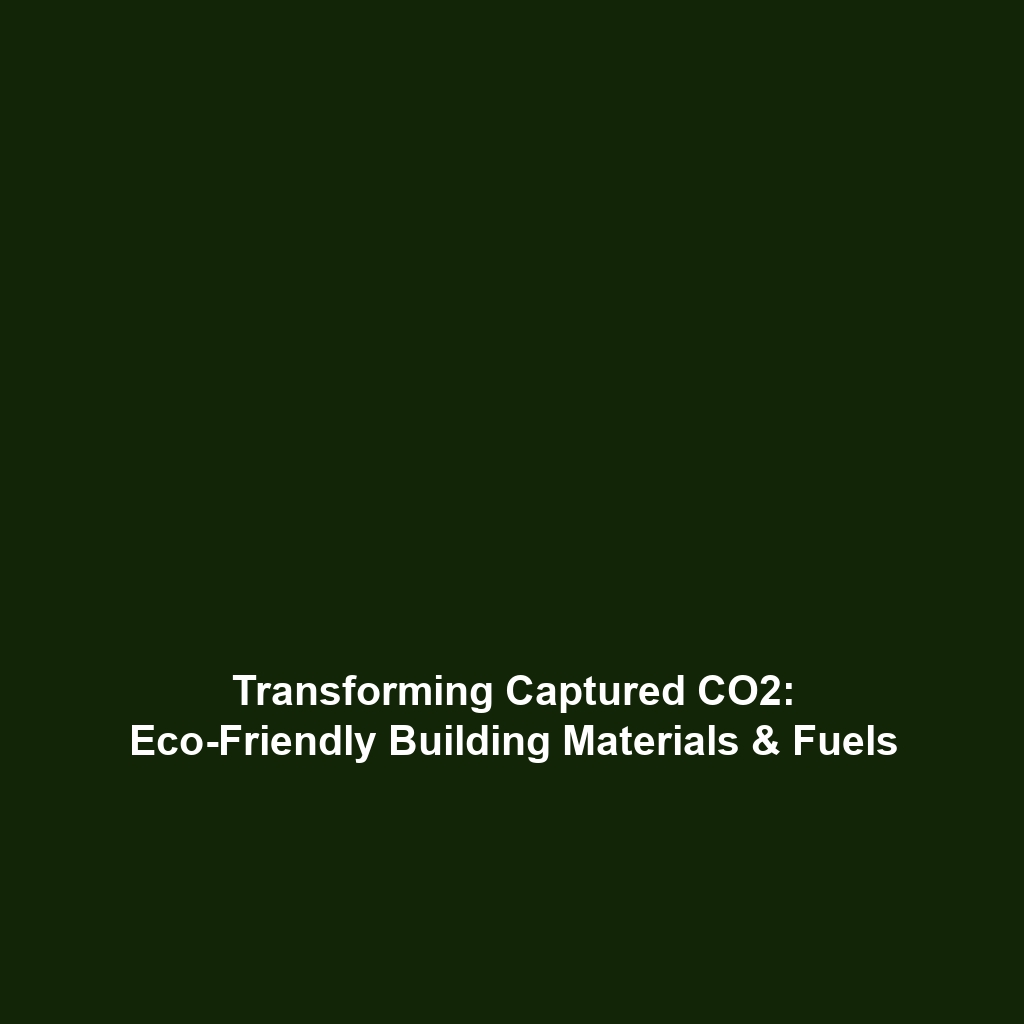Case Studies of CO2 Pipelines: U.S. Enhanced Oil Recovery and Storage
Introduction
The U.S. is home to several thousand miles of CO2 pipelines, a critical infrastructure supporting enhanced oil recovery (EOR) and carbon storage efforts. These pipelines are integral to the broader strategy of Carbon Capture & Storage (CCS), which aims to reduce greenhouse gas emissions and combat climate change. By facilitating the transportation and storage of captured CO2, these pipelines play a pivotal role in promoting a sustainable energy future. Understanding the case studies of these pipelines enhances our knowledge of their operational efficiency and environmental impact.
Key Concepts
Several key concepts underpin the operation of CO2 pipelines within the framework of Carbon Capture & Storage (CCS):
- Enhanced Oil Recovery (EOR): The method of injecting CO2 into oil reservoirs to boost extraction, significantly improving yield.
- Carbon Capture: The process of capturing CO2 emissions produced from various industrial sources before they enter the atmosphere.
- Storage: Long-term containment of captured CO2 in geological formations to mitigate climate change impacts.
Understanding these concepts is essential for evaluating the efficacy and sustainability of CCS as a viable solution to reduce carbon footprints in various sectors.
Applications and Real-World Uses
The applications of CO2 pipelines are vast and multifaceted, particularly in the realm of Carbon Capture & Storage (CCS). Here are some significant real-world uses:
- 1. EOR Projects: Numerous oil companies employ CO2 pipelines for EOR, enhancing recovery rates while simultaneously facilitating carbon sequestration.
- 2. Industrial Applications: Industries such as cement and power generation are utilizing CO2 pipelines for transporting captured emissions to designated storage sites.
- 3. Research Initiatives: Ongoing studies aim to optimize pipeline technologies, ensuring greater efficiency and safety in CO2 transportation.
Through these applications, CO2 pipelines are advancing the goals of Carbon Capture & Storage (CCS) while providing economic benefits to the energy sector.
Current Challenges
Despite the progress in CO2 pipeline infrastructure and technology, several challenges remain:
- 1. Regulation: The regulatory landscape for CO2 pipelines is complex, often creating uncertainties and delays.
- 2. Infrastructure Costs: The high cost associated with building and maintaining pipelines can be a significant barrier to entry.
- 3. Public Perception: Concerns regarding safety and environmental impacts can hinder community support for new pipeline projects.
Addressing these challenges is crucial for the continued expansion and adoption of CO2 pipelines in Carbon Capture & Storage initiatives.
Future Research and Innovations
The future of CO2 pipelines in the context of Carbon Capture & Storage (CCS) looks promising, with ongoing research and innovation paving the way forward. Key areas include:
- 1. Advanced Materials: Development of more durable pipeline materials designed to withstand higher pressures and corrosive environments.
- 2. Monitoring Technologies: Enhanced monitoring systems for real-time tracking of CO2 flow and leakage detection.
- 3. Integration with Renewable Energy: Research into utilizing captured CO2 for the production of synthetic fuels and chemicals.
These innovations are expected to enhance the efficiency, safety, and economic viability of CO2 transportation in various applications.
Conclusion
Case studies of CO2 pipelines in the U.S. highlight their significant role in enhanced oil recovery and carbon storage, crucial for Carbon Capture & Storage (CCS) initiatives. As the demand for sustainable practices grows, the importance of robust pipeline infrastructure will only increase. Continued investment in research and overcoming existing challenges will be key to unlocking the full potential of CO2 pipelines. For further reading on related topics, explore our articles on Carbon Capture Strategies and Enhanced Oil Recovery Technologies.
This article is structured to enhance readability and search engine optimization (SEO), while also delivering insightful content on the significance of CO2 pipelines in Carbon Capture and Storage (CCS).






